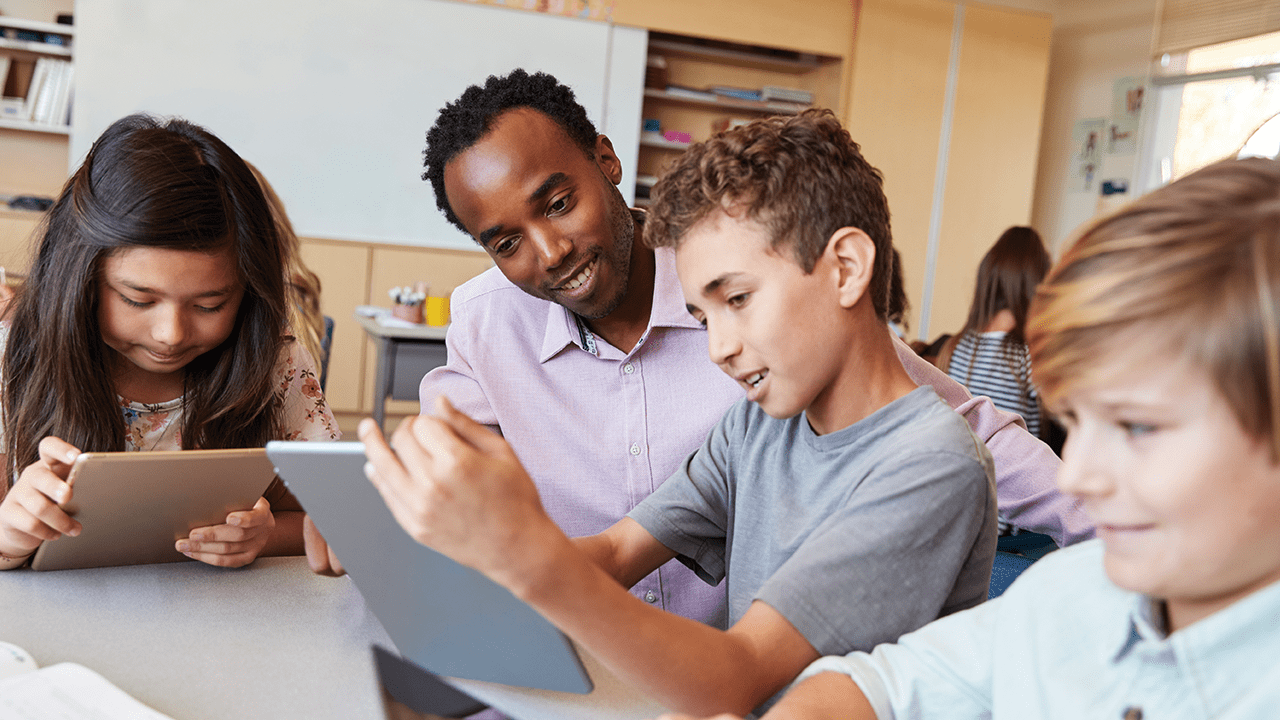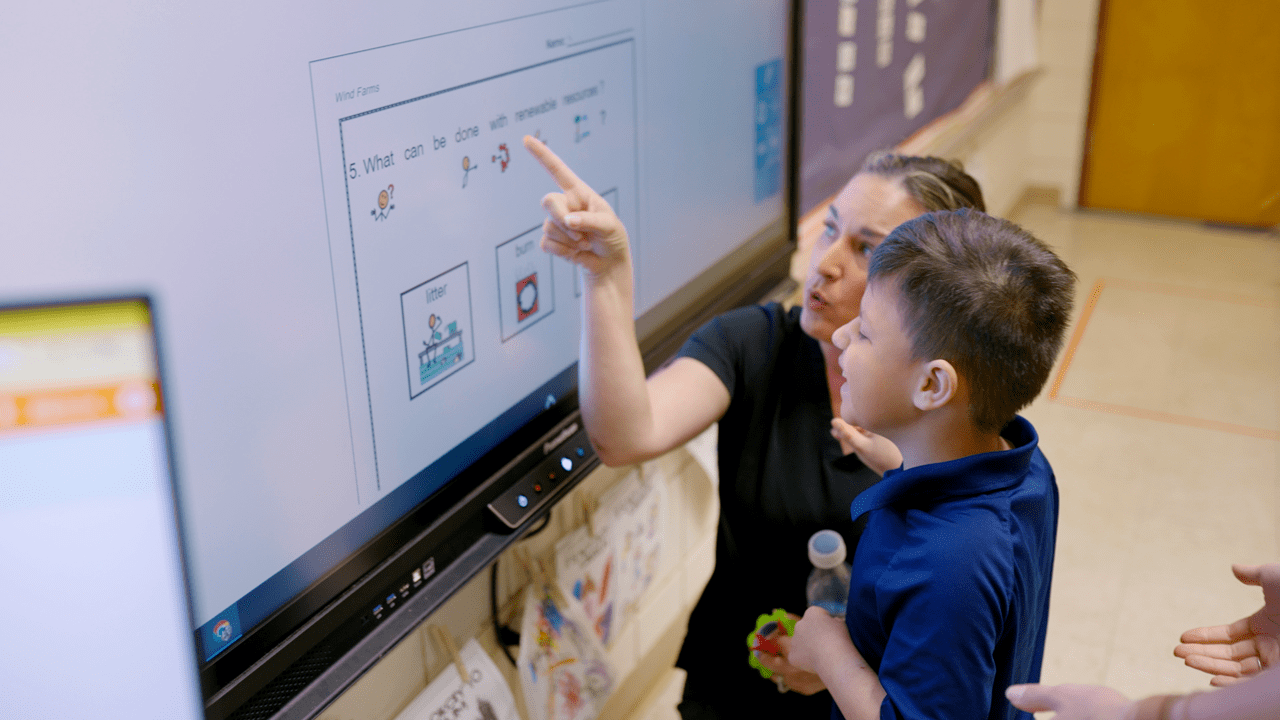As a parent or teacher, consider targeting independent leisure instruction, social leisure skills, and community-based outings (complying with social distancing guidelines and your local community’s recommendations). You may have different goals and skills you want your student to focus on in each of these categories. Similarly, they might have strengths and a greater willingness to participate in one of these more than others. Ultimately, however, attending to each of these areas will enhance their overall leisure skills.
Independent Leisure Instruction
When working with families and teachers, I often hear them remark that they don’t know what their students like to do for fun or that their child’s leisure skills are restricted to devices or screens. While it may be true that finding a variety of independent leisure activities is easy or obvious for some students, it is nevertheless helpful to set up an informal assessment to gain more information or uncover some potential areas of interest. This is a quick and easy way to try lots of different activities to gauge both their interests and abilities. We often think of using assessments for academics, but it’s equally important to assess leisure skills.
First, consider what we already know about our students’ skills and interests. Some initial questions we might ask include:
- Does my student typically like to be inside or outside?
- Do they have specific high interests that might be incorporated into a leisure activity?
- Do they have specific skills that lend themselves naturally to games or activities? (For example, are they good at put-in tasks, matching, or sorting?)
- Do they tend to relax when engaging in sensory or gross-motor activities?
Once you have given some thought to what you already know about your student, use this information to select three to five different games or activities for them to try in a 15- to 20-minute session (it could be longer or shorter given the level of your student). Do not modify or adapt the games or activities in any way; rather, assess whether they might be interesting to and enjoyable for your student with modifications or adaptations.
Listed below are potential activities:
- Puzzles
- Matching games
- Sorting games
- LEGOs or blocks
- Art activities
- Scrapbooking
- Play-Doh
- Bubbles
- Water play
- Pretend play with dolls or kitchen set
- Singing or listening to music
- Dancing
- Swinging
- Jumping on a trampoline
- Chair yoga
- Deep breathing or meditation routines
- Nature walks or scavenger hunts
- Stationary bike
- Treadmill
- Weight routines
- Gardening
- Biking or scooter-riding
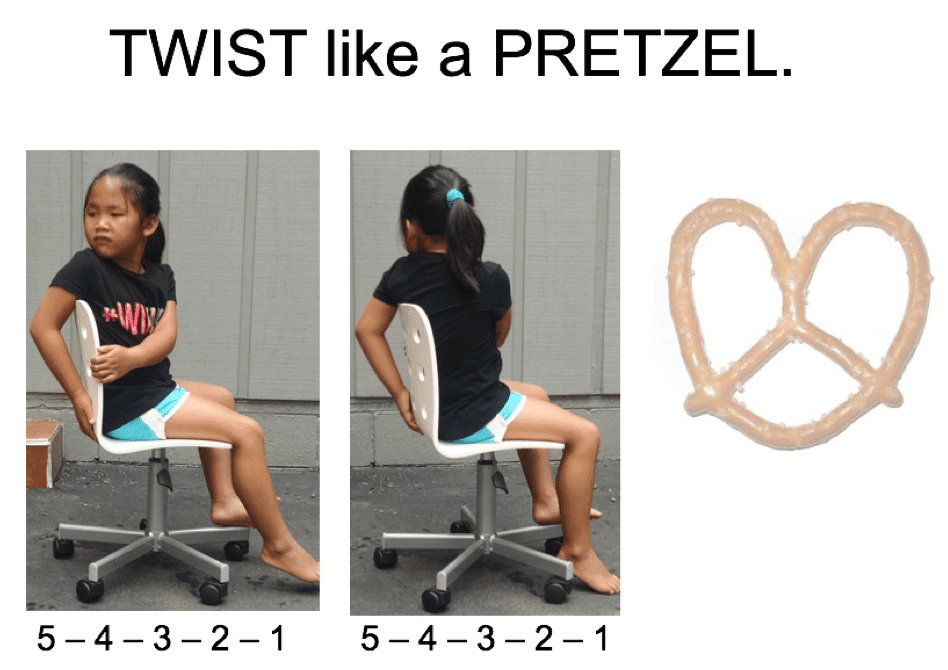
From the games and activities you try, select one to focus on teaching your student first. It should be something that seems both potentially interesting and that your student has the ability to learn independently. Next, determine the types of visual supports you can incorporate in order both to increase your student’s interest and engagement and to encourage independence.
Here a few types to consider:
Use a visual checklist to clarify the steps of a routine or activity (for example, the steps of an art activity might be shown through sequenced picture icons or photographs).
Include visual cues to highlight information (borders might be thickened or highlighted to help clarify where to color or a picture might be color‑coded).
Segment or organize materials to increase independence (puzzle pieces might be organized by row or section and put into individual baggies).
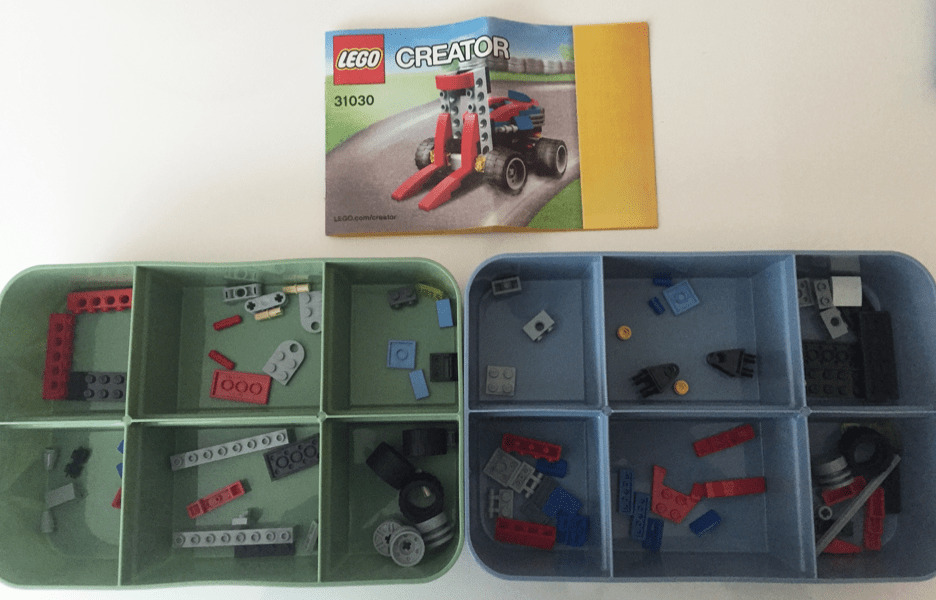
Clarify “finished” (show a student how long they can or should play and when that time is over using timers, countdown cues, or ways to highlight a natural ending to an activity, such as the LEGO pieces disappearing after something has been built).
Incorporate a student’s high interests into the game or activities (for example, modify a memory game by using a student’s high interest in cars or movies).
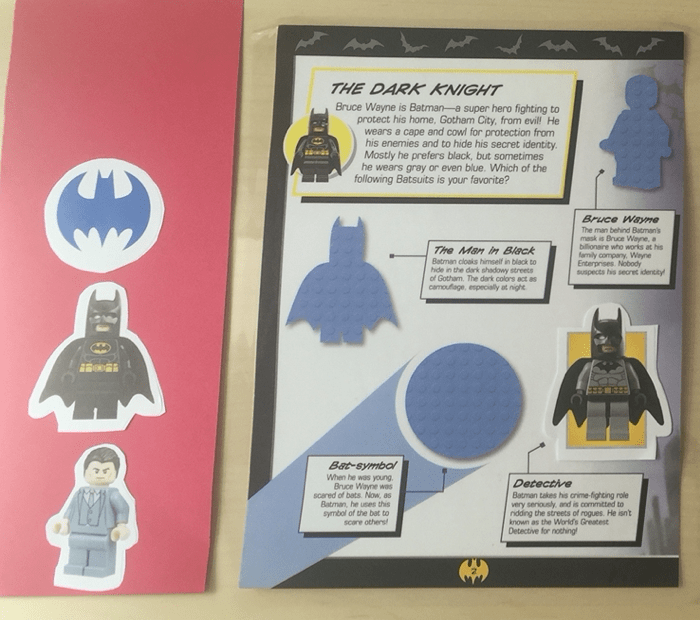
Once you adapt the game or activity, try it once again. You may need to continue making small changes or modifications to increase engagement or independence, but you will always gain greater insight into your student’s needs that you can incorporate into other activities as well.
Social Leisure Skills
It’s also important to focus on teaching social leisure skills to your students. Social skills instruction may look vastly different from one student to the next, depending on their current social levels and interests. For some students, a goal might be parallel play (playing alongside another person). For others, it could be joint attention (attending to or sharing an interest in an object or event with another person) or sharing materials. For some, instruction might include following the rules of a game or waiting and taking turns. Finally, other students might be ready to learn more complex social rules, including practicing social commenting, or even learning the art of gracefully winning and losing games and responding appropriately.
As you would when assessing independent leisure skills, start with a quick informal assessment of both your child’s interest in social activities as well as their abilities. Also think about what types of activities lend themselves easily to working on the social skills you are targeting.
Here is a list of potential social games or activities:
- Simple board or card games
- Memory or other matching games, such as Zingo!
- Tabletop sports games, such as basketball or bowling
- Basketball
- Bowling
- Cornhole
- Relay races
- Dance or yoga routines
- Badminton or pickleball
- Foursquare
- Hopscotch
- Frisbee or catch
Once you have tried several of these activities and have determined both the social skills and the leisure activity you are focusing on, determine the most beneficial types of supports to improve your student’s social abilities and enhance their enjoyment of the activity.
Here are a few suggested practices to try:
Use a social narrative to introduce the social goal or concept you are targeting with your student (for example, if they are working on social commenting during a game, introduce the concept with a story outlining the purpose of commenting, what to say, and when to say it). Make sure to use visuals, including photographs or symbols to further explain ideas within the narrative.
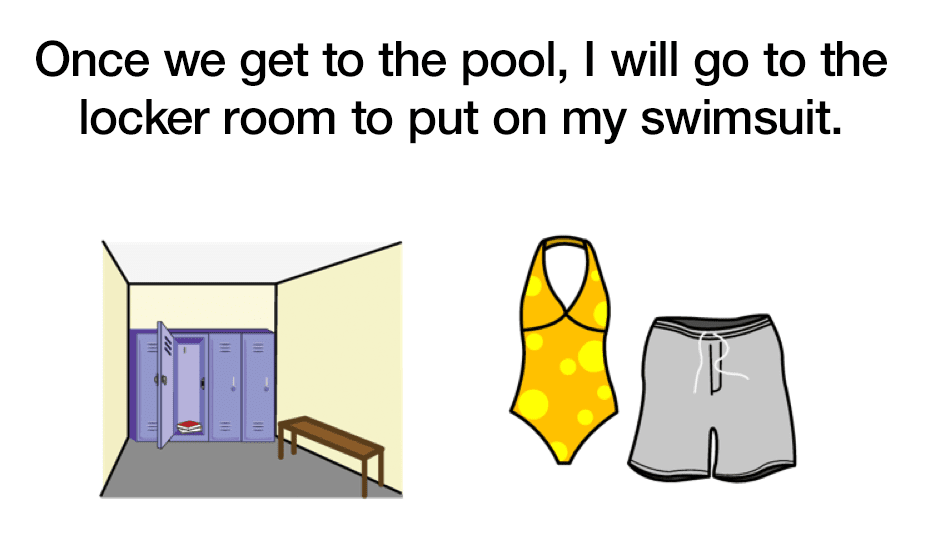
Teach the rules of a game by using visual instructions including icons or photographs to clarify exactly what to do.
Modify the rules of a game or simplify parts that are especially confusing or complex.
Add visual reminders to help a student remember the social skill you are targeting (“John, remember to say ”˜good game’ when the game is over.”).
Use tokens or other cues to help keep track of turns.
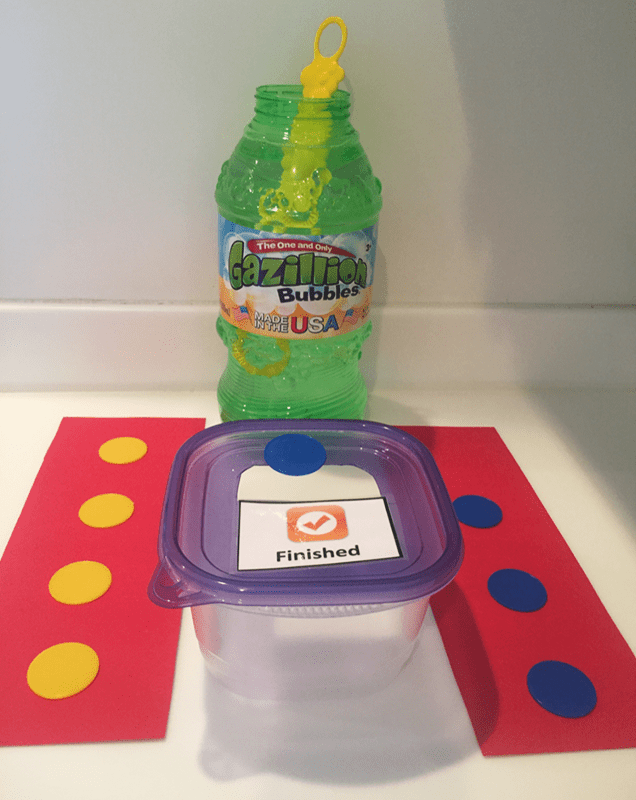
Use a “wait card” or provide a “wait chair” to clearly identify what to do while waiting for their turn.
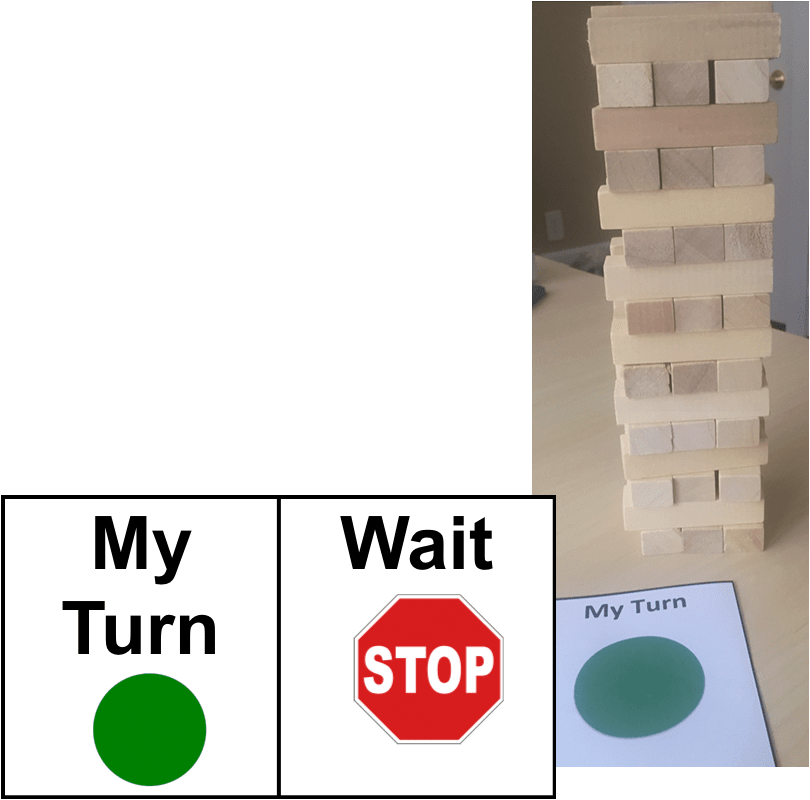
As with your independent leisure instruction, you may find that the modifications you’ve made or the structure you’ve added may not be perfect the first time around. That’s okay! Remember that every time you observe and assess, you will learn more and gain new insight into your student’s needs. Teaching social skills is an ongoing, lifelong process.
Community-Based Outings
Finally, community-based outings can be wonderful leisure activities for your student. Though these might be more limited given social distancing guidelines, there are still numerous places to go that can be fun and offer great learning opportunities.
When determining suitable outings for students, think about both the goal of the activity and how they will participate. Perhaps they are going shopping for art supplies, and the focus will be on independently using a visual checklist to find items and then check out with the cashier. Another example might be for a student to increase their daily exercise, and a photo scavenger hunt checklist could be used to increase engagement and interest in the walk.
Regardless of the outing, make sure you consider the goal and your child’s participation level to prepare them for a successful trip.
Here is a list of some that you could try:
- Ordering a favorite dessert and eating it outside
- Taking a hike or nature walk on a favorite hiking trail
- Having a picnic
- Shopping at an outdoor market (following social distancing guidelines)
- Biking or scooter-riding on a greenway or sidewalk
- Swimming (following social distancing guidelines)
- Grocery shopping to make a favorite snack or meal
- Going to buy a book, a game, or art supplies
- Fishing or bird-watching
- Taking a photography walk around the block
- Kayaking or canoeing
- Kite-flying
- Purchasing flowers to plant a small flower garden
Once you’ve determined the type and goal of the outing, design visual supports that will prepare your student and enable them fully to participate and have fun while out. Make sure you think about different potential scenarios, including the need for social distancing and wearing a mask in public places. Have a plan in mind of how you might help address these issues should the need arise.
Here are a number of supports that can be extremely effective during community outings:
First, scout the place you are going so that you are familiar with it and can identify issues or concerns you may need to address. If you are going shopping, you may want to know where items are located so that you can easily highlight those areas for your student.
Use a social narrative to introduce the outing to your student. Let them know where they are going, what they are going to do once they get there, and how they’ll know when it’s time to leave. Use simple language and photographs or pictures to clarify expectations and each step of the outing. If you anticipate something being challenging, address it in the social narrative so that your student knows exactly what the expectation is and how it will be addressed. Include information and pictures about social distancing and wearing a mask as needed.
Use a visual schedule or checklist while on the outing so that each step or place you are planning to visit is clearly shown.
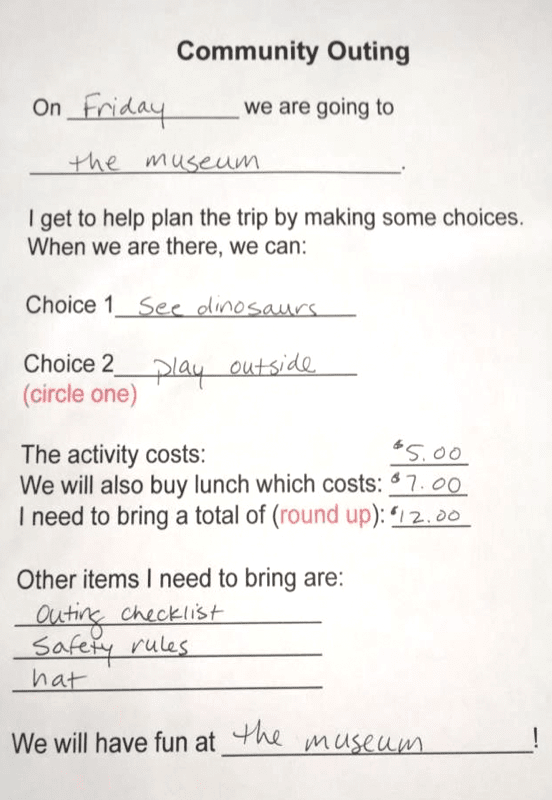
Make sure to clarify when the outing is finished. A visual checklist should help show when they should return to the car or walk back home, but you may also need to use a timer or another way to clearly show when the activity is finished.
Consider preparing additional visual reminders to highlight specific expectations during the outing. If you are helping support a student when they are ordering ice cream, you may have a small visual cue to say “please” or to hand the money to the cashier.
Organize materials for the outing so that everything is easily accessible. Use a backpack to hold necessary items. A small clipboard can be used to hold a checklist. Don’t forget to bring along the social narrative to reference as needed, and have any visual reminders ready.


